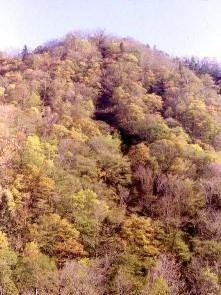(Upload on January 28 2023) [ 日本語 | English ]
Mount Usu / Sarobetsu post-mined peatland
From left: Crater basin in 1986 and 2006. Cottongrass / Daylily
need to cooperate with field experiments and lab-experiments |
How do we approach the field science?
method: principles of mechanical reductionism vs wholism in environmental science, wholism is major because the study deals with significance or fatal problems on human and other living things, i.e., the total phenomena of studies in fields. |
Environmental governance (環境ガバナンス)a discrete area of policy and research, particularly concerning the expansion of theoretical knowledge regarding environmental justice and sustainability (Batterbury & Fernando 2006)Good governance, evaluated by legitimacy, transparency, accountability, inclusivity, fairness, integration, capability and effectiveness (Lockwood et al. 2010) |
Global warming (地球温暖化)☛ Introcution to global warming☛ Ecology and global warming Ultraviolet (ozone hole)☛ Ozone depletion and the effects of UV radiation |
Objectives of this lecture (conducted duirng 2004 and 2010)Large-scaled environmental fluctuations derive various effects on biosphere, including various-sized organisms from unicellular microorganisms to large animals and plants. To clarify the responses of ecosystems to environments, it is prerequisite to research and analyze various temporal and spatial scales. Based on the consideration of those scales, we focus on terrestrial and oceanic plant communities and learn the response of ecosystems to global warming and the feedback to the environments.Related lecturesGlobal warming ecology ( 温暖化生態学特論 )Advanced course in environmental conservation (環境保全特論) Introduction to ozone depletion and the effect of UV (自然環境学総論) [ References / Link ] |
Carbon offset (カーボンオフセット)Reduction or removal of emissions of CO2 or other GHGs made to compensate for emissions made elsewheremust be measurable, e.g., planting trees Carbon neutral (カーボンニュートラル): CO2 emissions become zero through carbon offset |
|
ecosystem biome: temperature and precipitation (human) disturbance scale-dependence on disturbances greenhosue effect and refrigerator effectinteractions between environments and between environments and ecosystems interactions between environments and between environments and ecosystems taiga and forest fire
Regeneration after wildfire in Alaska 
Small scaleManipulationexperimental warming
field greenhouse
perennial plants |
Large (global) scaleTo understand the followings, read referencesDistribution
single factor (Ex. temperature only) general reflection patterns of plants, soil, and water vegetation index normalized difference vegetation index (NDVI)
seasonal changes in NDVI
6CO2 + 12H2O ← C6H12O6 + 6O2 + 6H2O estimation of primary productivity by satellite data
absorbed photosynthetically active radiation, APAR |

plant communityflora
Ex. Mount Koma
leaf colors in spring with reference to UV spatial and temporal changes in ecosystems toposequence photosynthesiswavelengths that are used for photosynthesis ecosystembiomeenvironment
temperature
Arctic ultraviolet (UV) and terrestrial plantsresponses of plants to UV
flavon - UV-absorbing substances
Ex. nicotine |
lab-experiments: advantages and disadvantages extrapolation - risky
extrapolation - riskyrepairment by visible light mycorrhizal fungi and plantsthe way to understand ecosystem responses to UVeffects of UV on mycorrhizal fungi interactions between mychorrhizal fungi and plants responses of plants changed by UV litter decomposition and UV: photodegradation and microbial decomposition field experimentResponses of Grimmia antarctici Card on UVmeta-analysisprinciples of meta-analysismeta-analysis of the effects of UV on plant responses meta-analysis of the responses of plants to UV in the Arctic the schema of ecosystem chanegs induced by climate changes, including UV - no numerals now the present status of UV in Australiapeople living closer to the Antarctic have stronger crisis awareness. Therefore, the research on the effects of UV on ecosystems and lives are conducted well in Australia, South Africa and countries of South America.
recognizing differences between ocean and land
|